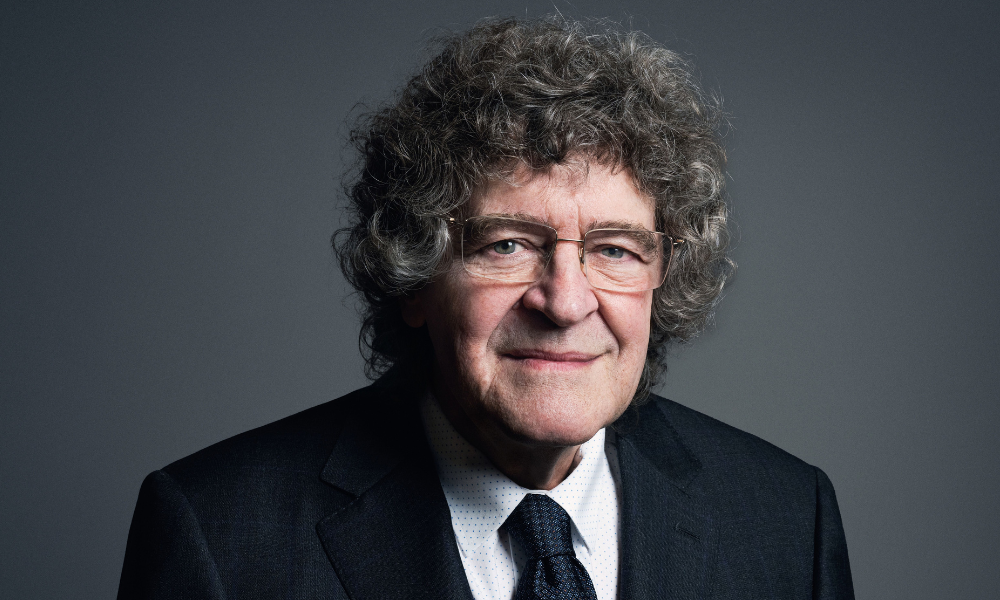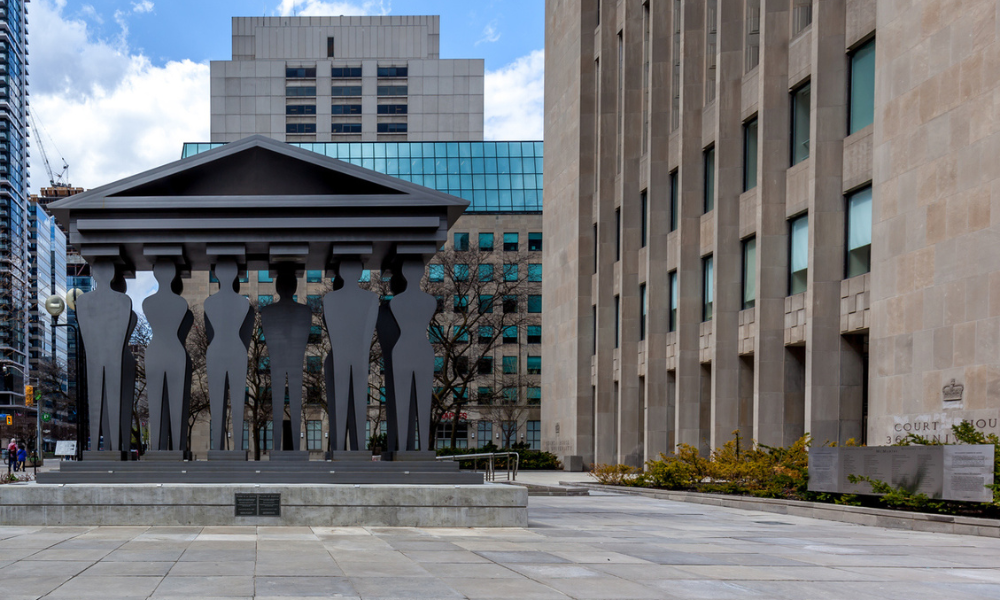The first “green” office lease has just been introduced to the Canadian commercial real estate industry, and lawyers say there’s increasing interest from landlords in implementing these types of contracts, as well as other sustainable building standards.
 Michael Brooks, counsel with Aird & Berlis LLP and CEO of the Real Property Association of Canada, says that as a commercial real estate lawyer he is absolutely seeing more landlords who are considering implementing green leases or standards such as the Building Owners and Managers Association “Go Green” standard, or Leadership in Energy and Environmental Design.
Michael Brooks, counsel with Aird & Berlis LLP and CEO of the Real Property Association of Canada, says that as a commercial real estate lawyer he is absolutely seeing more landlords who are considering implementing green leases or standards such as the Building Owners and Managers Association “Go Green” standard, or Leadership in Energy and Environmental Design.
Their motivations for doing so come from two sources, he says. For new buildings, many of the larger tenants, as part of their corporate responsibility initiatives, want to be associated with sustainability, so corporate owners want the buildings to be LEED-certified or higher, he says.
“The other motivation is really coming from the landlords themselves, for their own branding and from their own altruism to be seen as being responsible and doing the right thing,” he says.
LEED is a market-based rating system that facilitates and certifies higher energy and environmental performance of buildings and communities.
New structures looking for certification can earn credits based on their performance, in categories like water efficiency and indoor environmental quality, and can achieve one of four possible levels of certification, either certified, silver, gold, or platinum, says the Canada Green Building Council. BOMA Go Green, on the other hand, is a national environmental recognition and certification program for existing commercial buildings.
It allows landlords to benchmark the sustainability of existing buildings against peers and get ideas about what to do next, says Brooks.
The first “green” office lease for the commercial real estate industry was released earlier this month by the REALpac. The lease “encourages the use of sustainable materials in tenant improvements, and encourages sustainable practices by both the landlord and the tenant in the management, use and occupation of the building,” says REALpac.
It also encourages increased recycling and works to ensure that tenants and landlords adopt environmentally friendly practices. The lease was developed through the association’s green lease committee, which includes lawyers, sustainability experts, leasing specialists, and LEED-accredited professionals.
Many landlords have been doing work in the sustainability area for 20 years, implementing changes such as retrofits, improving control systems, replacing single-paned glass, in efforts to reduce the energy bill for the building, says Brooks.
Some government tenants and Fortune 500 companies have been taking initiative in this area, says Brooks, and also landlords, such as First Capital Realty, who has pledged that every one of their new shopping centres will be green.
“A recent collateral benefit in hindsight has been that the landlords have also been reducing their indirect CO2 emissions because they’re drawing less current from the grid,” he says.
Mark McHughan, a commercial real estate lawyer with Gowling Lafleur Henderson LLP, says the process of meeting LEED standards or BOMA Go Green standards is good for the occupants, as they work in a healthier environment; the companies that employ those occupants, as they are seen to be socially responsible; and the landlords, as it increases the prestige of the building.
Buildings seeking LEED certification is a growing trend, he says, and certain levels of government are also promoting it through incentive programs. “The momentum is going towards doing these kind of buildings and it’s probably again good for everybody,” he says.
Everyone looks at this issue from a different perspective, he says, either for social reasons or the opportunity to enhance their buildings from a market point of view and having to meet the needs of their tenants.
From the tenants’ side however, McHughan notes there are 70 points available in LEED and you only need 26 to be certified within six categories. He cautions that tenants should not just think they are getting something a lot better in terms of operating costs because the building is certified, for example.
“Not that . . . it’s necessarily easy to meet the minimum standard, but there are some easy points out there sort of in each category that are still good things, but they may not impact at all on operating costs,” he says.
There are also typically some extra construction costs associated with putting up a building to meet these standards, as well as costs associated with being certified, which McHughan notes are probably minimal in terms of the big picture of a long-term lease.
Tenants should also be prepared in some instances to pay slightly a higher base rent if the building is certified.
McHughan says that the system sounds positive and that there is enough scrutiny in the system that you can’t pick up 26 points and say you’re LEED-certified “without doing some good stuff that probably ultimately is going to result in some reduced costs and [a] better work environment.
“There’s lots of reasons people would want to do it, and most people probably would; I guess just the one qualifier is a LEED-certified building can mean a whole bunch of different things,” says McHughan.
For buildings that earn most of their points for energy efficiency and water efficiency, for example, McHughan says, “chances are your operating costs may end up being lower, substantially lower down the road than the building next door that sort of looks the same from the outside but hasn’t been built with all these finely tuned and commissioned systems in there that reduce the energy.
“I think that’s one where if you spend the money and do it properly, you probably do get a pretty substantial return,” he says.
Brooks says he does see some resistance to green leases fairly frequently.
“There is some fear of what I call ‘green-plating’ buildings, where the landlord just going way over the top and spending way too much money all at once on sustainability initiatives and jamming that cost through to captive tenants in the building,” he says.
“Certainly landlords would be focused on who pays, and . . .the business case is always one of the first things they think about - what’s the payback period, is this an operating cost passed through to tenants, is my lease worded sufficiently so that I can pass through the cost, or is it a little bit ambiguous,” says Brooks.
While there are several green real estate conferences happening and some law firms are putting on seminars on green leases, Brooks notes that it is very early days in this area, and many lawyers are just getting up the learning curve.
However, he says that lawyers will need to be “key brokers of these environmental clauses in these leases, they will need to get the parties to agree on shared objectives and shared costs, if we are to move this massive stock of older buildings into the future.”
 Michael Brooks, counsel with Aird & Berlis LLP and CEO of the Real Property Association of Canada, says that as a commercial real estate lawyer he is absolutely seeing more landlords who are considering implementing green leases or standards such as the Building Owners and Managers Association “Go Green” standard, or Leadership in Energy and Environmental Design.
Michael Brooks, counsel with Aird & Berlis LLP and CEO of the Real Property Association of Canada, says that as a commercial real estate lawyer he is absolutely seeing more landlords who are considering implementing green leases or standards such as the Building Owners and Managers Association “Go Green” standard, or Leadership in Energy and Environmental Design.Their motivations for doing so come from two sources, he says. For new buildings, many of the larger tenants, as part of their corporate responsibility initiatives, want to be associated with sustainability, so corporate owners want the buildings to be LEED-certified or higher, he says.
“The other motivation is really coming from the landlords themselves, for their own branding and from their own altruism to be seen as being responsible and doing the right thing,” he says.
LEED is a market-based rating system that facilitates and certifies higher energy and environmental performance of buildings and communities.
New structures looking for certification can earn credits based on their performance, in categories like water efficiency and indoor environmental quality, and can achieve one of four possible levels of certification, either certified, silver, gold, or platinum, says the Canada Green Building Council. BOMA Go Green, on the other hand, is a national environmental recognition and certification program for existing commercial buildings.
It allows landlords to benchmark the sustainability of existing buildings against peers and get ideas about what to do next, says Brooks.
The first “green” office lease for the commercial real estate industry was released earlier this month by the REALpac. The lease “encourages the use of sustainable materials in tenant improvements, and encourages sustainable practices by both the landlord and the tenant in the management, use and occupation of the building,” says REALpac.
It also encourages increased recycling and works to ensure that tenants and landlords adopt environmentally friendly practices. The lease was developed through the association’s green lease committee, which includes lawyers, sustainability experts, leasing specialists, and LEED-accredited professionals.
Many landlords have been doing work in the sustainability area for 20 years, implementing changes such as retrofits, improving control systems, replacing single-paned glass, in efforts to reduce the energy bill for the building, says Brooks.
Some government tenants and Fortune 500 companies have been taking initiative in this area, says Brooks, and also landlords, such as First Capital Realty, who has pledged that every one of their new shopping centres will be green.
“A recent collateral benefit in hindsight has been that the landlords have also been reducing their indirect CO2 emissions because they’re drawing less current from the grid,” he says.
Mark McHughan, a commercial real estate lawyer with Gowling Lafleur Henderson LLP, says the process of meeting LEED standards or BOMA Go Green standards is good for the occupants, as they work in a healthier environment; the companies that employ those occupants, as they are seen to be socially responsible; and the landlords, as it increases the prestige of the building.
Buildings seeking LEED certification is a growing trend, he says, and certain levels of government are also promoting it through incentive programs. “The momentum is going towards doing these kind of buildings and it’s probably again good for everybody,” he says.
Everyone looks at this issue from a different perspective, he says, either for social reasons or the opportunity to enhance their buildings from a market point of view and having to meet the needs of their tenants.
From the tenants’ side however, McHughan notes there are 70 points available in LEED and you only need 26 to be certified within six categories. He cautions that tenants should not just think they are getting something a lot better in terms of operating costs because the building is certified, for example.
“Not that . . . it’s necessarily easy to meet the minimum standard, but there are some easy points out there sort of in each category that are still good things, but they may not impact at all on operating costs,” he says.
There are also typically some extra construction costs associated with putting up a building to meet these standards, as well as costs associated with being certified, which McHughan notes are probably minimal in terms of the big picture of a long-term lease.
Tenants should also be prepared in some instances to pay slightly a higher base rent if the building is certified.
McHughan says that the system sounds positive and that there is enough scrutiny in the system that you can’t pick up 26 points and say you’re LEED-certified “without doing some good stuff that probably ultimately is going to result in some reduced costs and [a] better work environment.
“There’s lots of reasons people would want to do it, and most people probably would; I guess just the one qualifier is a LEED-certified building can mean a whole bunch of different things,” says McHughan.
For buildings that earn most of their points for energy efficiency and water efficiency, for example, McHughan says, “chances are your operating costs may end up being lower, substantially lower down the road than the building next door that sort of looks the same from the outside but hasn’t been built with all these finely tuned and commissioned systems in there that reduce the energy.
“I think that’s one where if you spend the money and do it properly, you probably do get a pretty substantial return,” he says.
Brooks says he does see some resistance to green leases fairly frequently.
“There is some fear of what I call ‘green-plating’ buildings, where the landlord just going way over the top and spending way too much money all at once on sustainability initiatives and jamming that cost through to captive tenants in the building,” he says.
“Certainly landlords would be focused on who pays, and . . .the business case is always one of the first things they think about - what’s the payback period, is this an operating cost passed through to tenants, is my lease worded sufficiently so that I can pass through the cost, or is it a little bit ambiguous,” says Brooks.
While there are several green real estate conferences happening and some law firms are putting on seminars on green leases, Brooks notes that it is very early days in this area, and many lawyers are just getting up the learning curve.
However, he says that lawyers will need to be “key brokers of these environmental clauses in these leases, they will need to get the parties to agree on shared objectives and shared costs, if we are to move this massive stock of older buildings into the future.”







